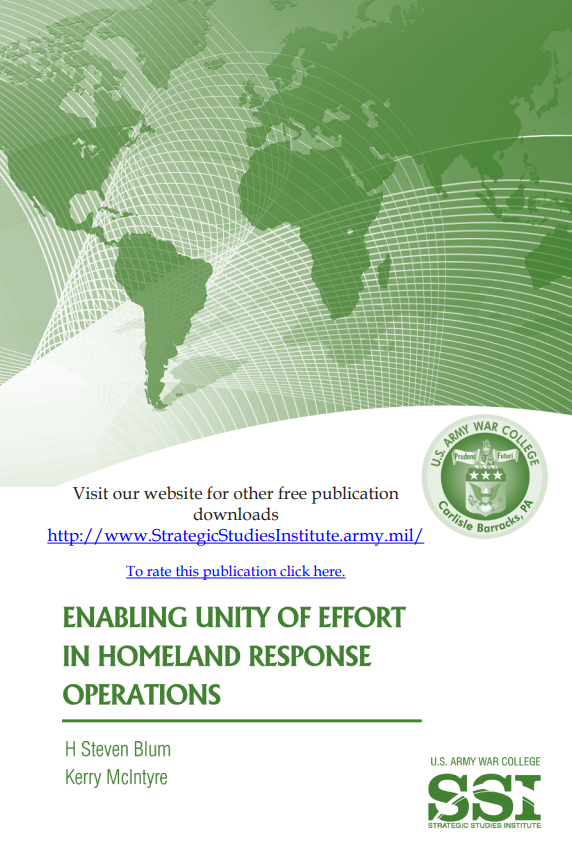 Authors: LTG H Steven Blum, LTC Kerry McIntyre
Authors: LTG H Steven Blum, LTC Kerry McIntyre
Any significant homeland response event requires Americans to work together. This is a complex challenge. The authors assert that the principal obstacle to effective homeland response is a recurring failure to achieve unity of effort across a diverse and often chaotic mix of participating federal, state, and local government and nongovernmental organizations. Despite a decade of planning since the terror attacks of September 2001, unity of effort still eludes us—particularly in the largest and most dangerous of crises. The authors examine how the military’s joint doctrine system affected joint military operational capabilities, concluding that a similar national homeland response doctrinal system is needed to create and sustain unity of effort. Doctrine performs a vital unifying function in complex operations, standardizing ways and means. A doctrinal system operates in a dynamic cycle, providing a process to identify capability gaps, develop and validate solutions, and incorporate new concepts into evolving plans and operational capabilities. To implement a dynamic national doctrine, the authors propose a new management concept modeled on the joint interagency task force. They also propose eliminating obstacles to unity of effort within the military, including the temporary employment of any relevant and available military capabilities under the direction of a governor.